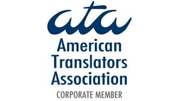One distinctive difference between English and German is the greater flexibility over word order and sentence structure in the latter language. German is described as having a V2 word order “which allows any constituent to occupy the first position as long as the second position is occupied by the finite verb.” This allows Germans to swap the order of subject and object, helped along the way by the case system to indicate which is which. For example, German can have “Ich sehe den Mann jeden Tag” (I see the man every day), “Den Mann sehe ich jeden Tag” (The man see I every day) or “Jeden Tag sehe ich den Mann” (Every day see I the man). By contrast, English is much more likely to insist on a subject-verb-object (SVO) structure: “I see the man every day”. Crucially, English has limited scope when it comes to inverting the subject-verb order, particularly where the lack of a case system might create confusion about which noun is the subject in a sentence.
This obviously brings us to the topic of predicate nouns and examples of sentences where they may not agree with the subject in terms of number (by now, you may have realised we don’t shrink from nerdy grammatical topics, such as proximal and distal demonstratives). The Grammar Girl blog has a neat description of what they call a “distracting predicate noun”, which results in a verb being sandwiched between singular and plural nouns, with the potential to confuse the issue of subject-verb agreement. E.g. “The star attractions at the museum are the art” (where plural “attractions” relates to the singular “art”).
This phenomenon creates a particular problem for translators if German puts a predicate noun at the start of a sentence and this noun does not match the subject in terms of singular or plural form. This gives us examples like “A special feature of product X are the adjustable LED spotlights”. At least to my native ears, that sentence structure is jarring because we read “A special feature” (singular”) and expect a corresponding singular verb “is”, only to encounter the unlikely plural “are”, at which point you have to reparse the whole thing to figure out that the subject of the sentence is “the adjustable LED spotlights”. These mental gymnastics can be avoided by re-ordering the English to put the subject first “The adjustable LED spotlights are a special feature of product X”.
The wisdom of this re-ordering is described in the Wikipedia account of “copular inversion”, where “a predicative nominal switches positions with the subject”. For what it’s worth, Wikipedia decrees that “where there is a difference in number, the verb agrees with the noun phrase that precedes it”. So the sentence “Jack and Jill are the problem” becomes “The problem is Jack and Jill”. In the latter, Wikipedia argues that the verb agrees with the apparent predicate, although presumably you could equally claim that “the problem” has simply become the subject of the sentence thanks to the new word order.
If you are not already confused, some of the non-matching singular and plural subject-predicate noun examples in the Grammar Girl blog strike me as unwieldy even setting aside word order. For example, she approves the grammaticality of the sentence “The real draw of this restaurant is the desserts”, pointing out that the verb matches the singular status of the subject “the real draw”. Personally, I would still prefer to bring the predicate noun into line too by rephrasing it “The real draw of this restaurant is the dessert menu” or changing the focus with “The desserts are the real draw of this restaurant”, just don’t ask me why that singular-plural mismatch is less awkward than the original!
If you have read this far, you obviously found this plural-related topic interesting, so you may also like our blog on the preferred plural form of kohlrabi (and plural forms of loan words in general).
About the Author
Alison Tunley
Alison is a seasoned freelance translator with over 15 years of experience, specialising in translating from German to English. Originally from Wales, she has been a Londoner for some time, and she holds a PhD in Phonetics and an MPhil in Linguistics from the University of Cambridge, where she also completed her First Class BA degree in German and Spanish… Read Full Bio
Image: Unsplash










